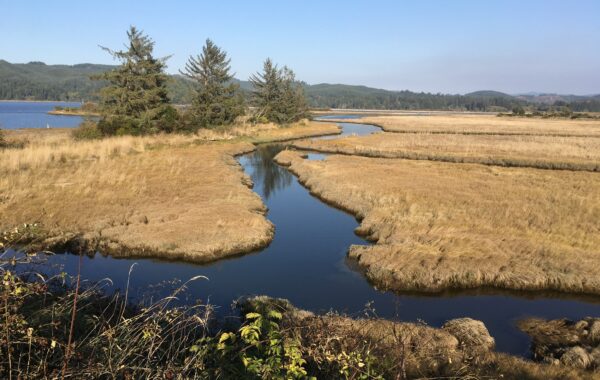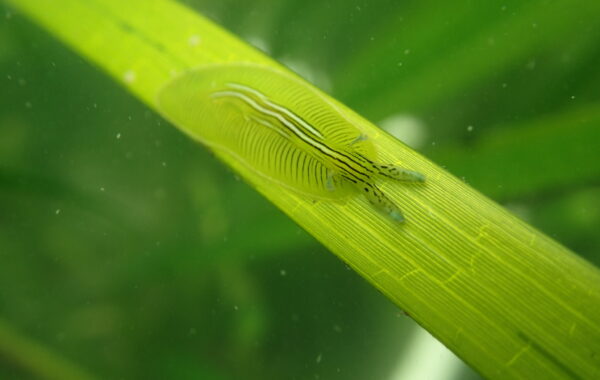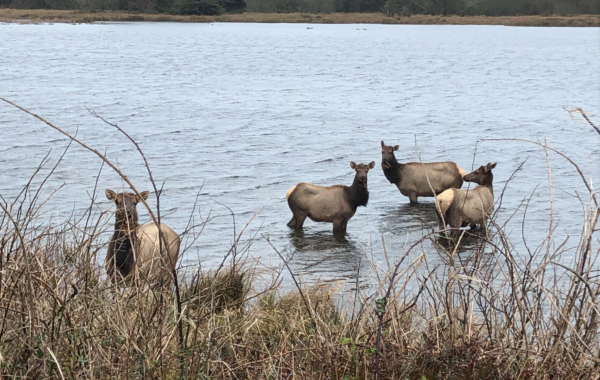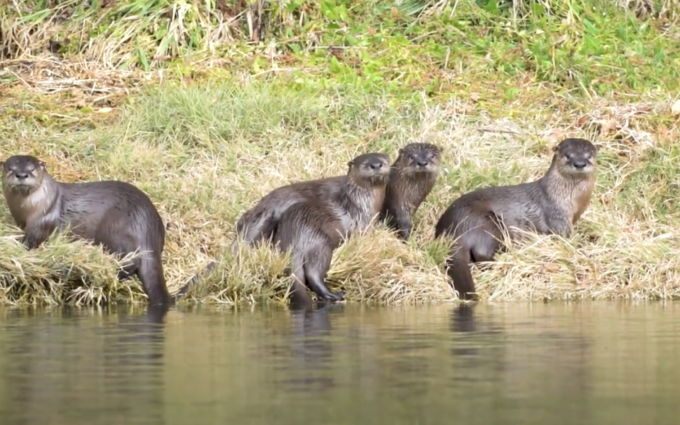The goal of the Campaign for Oregon’s Estuaries is to build a strong popular movement for conserving our estuarine resources based on a broad public understanding of the importance of these places where rivers meet the sea.
Safeguarding Critical Habitats
Our Current Work
Through our Campaign for Oregon’s Estuaries, we advocate for policies that guard the future of our estuaries by addressing the need for climate resilience and protection of species and habitats, and by considering their links to watersheds, the nearshore ocean, and surrounding communities. We educate the public about the importance of estuaries in responding to the effects of climate change and foster greater appreciation and stewardship of these critical ecosystems.
All About EMPs
Advocating for comprehensive updates for Oregon's Estuary Management Plans
Coos Bay Estuary
Planning for the future of a highly developed, yet ecologically vital estuary
Yaquina Bay Estuary
Protecting an ecosystem that supports the economy and marine science research
Estuaries Are Essential
They are vital coastal ecosystems, sheltered areas where freshwater and seawater mix, arenas of constant change where tides rise and fall, river flows shift, and migratory creatures come and go. They are among the most productive and important ecosystems on the planet, offering habitat and abundant food for fish and wildlife. Often called “nurseries of the sea,” estuaries are essential to the health of marine ecosystems. They play a crucial role in the life cycles of many species that migrate to and from the ocean, and provide nutrients that fuel food webs on land and at sea.
In the Oregon Conservation Strategy, our state’s plan for conserving species and their ecosystems, estuaries are considered vital “strategy habitats” because protecting them benefits many threatened and endangered species.

Caring for Estuaries is Caring for Communities
Estuaries foster biodiversity with a complex patchwork of habitats, including eelgrass beds, mudflats, saltmarshes, and tidal swamps. They are crucial for buffering the impacts of climate change, moderating storm surges, and improving water quality. These “ecosystem services” are foundational for coastal communities, bolstering resilience to flooding and storm surges and supporting economies based on abundant natural resources, such as fisheries, recreation, and tourism. By protecting Oregon’s estuaries, we can increase coastal resilience to climate change while doing our share as part of a worldwide stewardship network for the global ocean.
Currently, we are working with the Coos Bay and Yaquina Bay communities to manage the future of their estuarine resources.
Learn more

We Must Act Now
A critical aim of the Campaign for Oregon’s Estuaries is to promote responsible management and protection of Oregon’s estuaries by strengthening Estuary Management Plans (EMPs) throughout the coastal region. As part of Oregon’s land use planning system, our 22 major estuaries are zoned and managed by local governments through EMPs, which are incorporated within their comprehensive plans. However, all of these EMPs are decades old. They are not designed to address the challenges created by climate change, nor do they meaningfully consider endangered species and habitat protection. We aim to ensure that EMPs for all of Oregon’s estuaries are modernized and expanded in scope to encompass the need to preserve, enhance, and restore estuarine resources as we address a challenging future.

Recognizing Connections
Within the current structure of the land use planning system, separate EMPs were created for each estuary, and these plans direct management of each estuary separate from its adjacent shorelands, watershed, the nearshore ocean, and connections to other estuaries without acknowledging the links among systems and species. As we plan to maintain the vitality of our estuaries, the focus of our strategy must be more comprehensive.
The vision underlying our Campaign for Oregon’s Estuaries is holistic: linking estuaries to their watersheds and the nearshore ocean, and human communities to natural ones. We see estuaries as the linchpin ecosystems weaving together the coastal environment and we work to bring this landscape-level, ecosystem-based perspective to their planning and management. We depend on estuaries for many things, but the health of our estuaries depends on us. This is the mission of the Campaign for Oregon’s Estuaries.

Key objectives of the Campaign:
-
Holistic Management
Employing watershed-level planning and ecosystem-based approaches to acknowledge the connections among systems and better integrate the implementation of statewide planning goals across the coastal landscape.
-
Adaptation to Climate Change
Mitigating the effects of climate change and building resilience by planning for changing conditions and integrating nature-based solutions, which employ natural features to mitigate hazards while enhancing ecosystem integrity and biodiversity.
-
Intact Ecosystems
Incorporating species and habitat protections within land use plans, focusing on endangered and threatened species and those identified as species of concern in the Oregon Conservation Strategy.
-
Blue Carbon
Emphasizing the role of estuaries in carbon sequestration and storage and enhancing carbon drawdown by restoring and protecting wetland and seagrass habitats.
-
Restoring a Natural System
Increasing support for restoration efforts and planning to restore the historical range of our estuaries, not just the limited areas that remain after alterations like diking, filling, and shoreline armoring have occurred
-
Clean Water
Acknowledging the role estuarine habitats play in improving water quality and the impacts watershed pollution have on estuary health, in our planning efforts.
-
Estuaries for All
Fostering extensive community engagement and enhanced stewardship of our estuaries, through outreach to all segments of communities throughout watersheds.
-
Cultural Connections
Recognizing Tribal sovereignty and uplifting tribal voices in estuary management, including acknowledging Traditional and Indigenous Ecological Knowledge as valuable and necessary to manage appropriately and steward estuarine resources.
-
Estuary Education
Enhancing statewide public education about the importance of estuaries for all ages and demographic groups.
What we're working on now
Our Programs and Campaigns
Oregon Shores is committed to a long-term effort to assure comprehensive planning for all of the state’s estuaries. We advocate for comprehensive updates for all the state’s Estuary Management Plans and aim to mobilize widespread community engagement in the planning process.. The goal of the Campaign for Oregon’s Estuaries is to build a strong popular movement for conserving our estuarine resources, based on broad public understanding of the importance of these places where rivers meet the sea. Your donations make our work possible. Want to get inovled? Contact us.
Did You Know?
River otters utilize estuaries for various purposes, including hunting, breeding, and shelter. These semi-aquatic mammals are adept swimmers and skilled hunters, preying on fish, crustaceans, and other aquatic organisms abundant in estuarine environments. The rich and dynamic nature of Oregon’s estuaries provides river otters with an ideal setting for foraging, offering a diverse menu and ample opportunities for social interactions. As they navigate the intricate waterways of estuaries, river otters contribute to the health of these ecosystems by controlling prey populations and participating in the intricate web of life along the coast of Oregon.


